It is February in Florence—the nighttime temperatures hover around freezing, the daytime skies are overcast, the cold wind coming off the Arno hurries along tourists who would otherwise stop to take a photo of the Ponte Vecchio, and the only warm room in my apartment is the kitchen. But it is also August in Sicily—I have traveled there via a single spoonful of tomato paste, the concentrated essence of the island’s summer sunshine.
From the small space where I spend my winter days warming myself while waiting for a moka pot to spout coffee, I am transported to another time and place where heat radiates not from my stovetop, but from the cobblestones of the courtyard at the Anna Tasca Lanza Cooking School in central Sicily.
It was in the final week of August 2021 when I arrived aboard a plane to Palermo, followed by a train and car ride through a hilly, rural landscape—all for the purpose of familiarizing myself with a certain tomato known in Italian as pomodoro siccagno.
Fabrizia Lanza, the director of the Anna Tasca Lanza Cooking School, which was named for her mother who founded it in 1989, points out that the first and most important thing to understand about this tomato is “the pomodoro siccagno is the method more than the variety itself.”
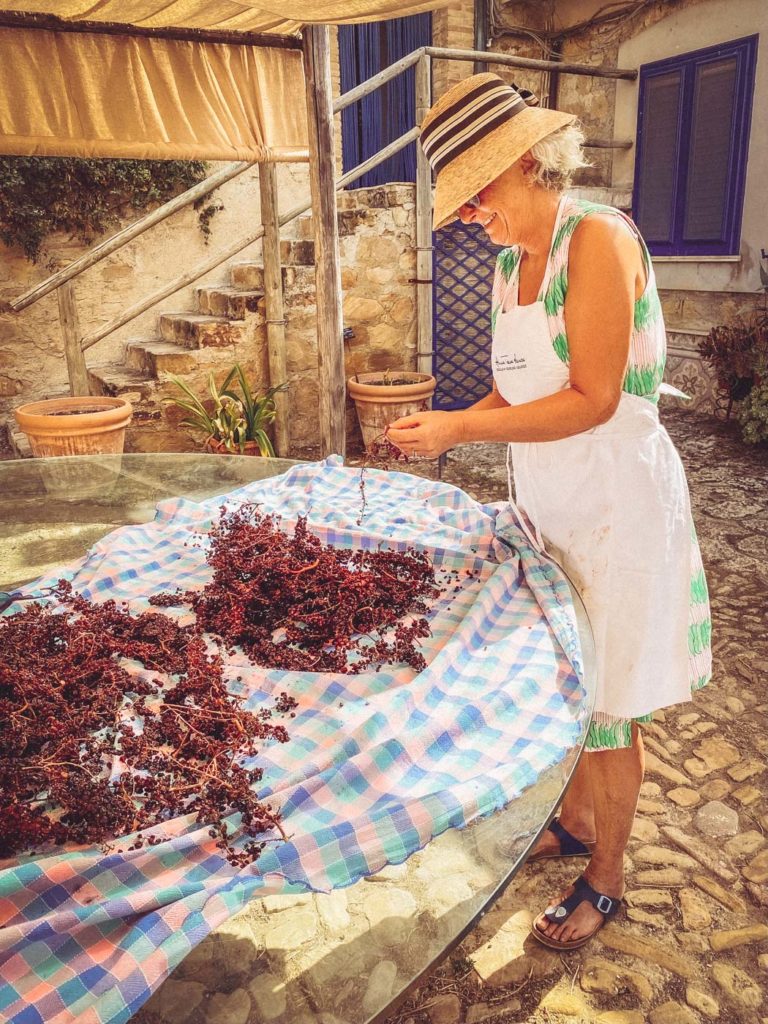
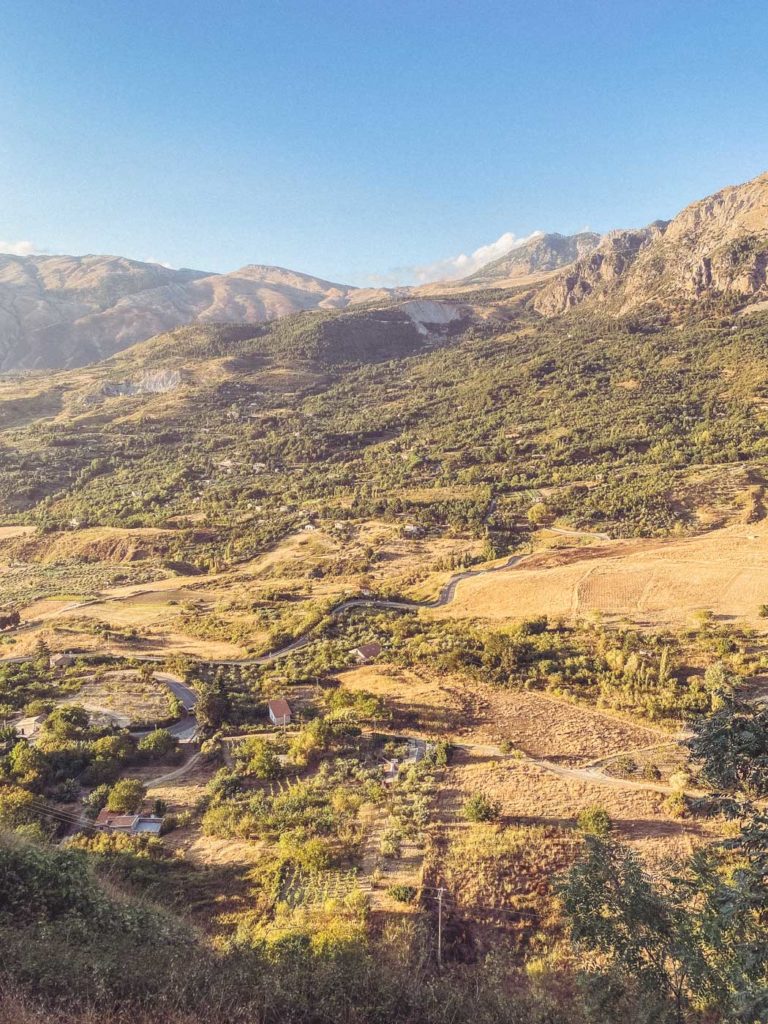
To demonstrate what she means by this, Lanza takes me and a few others who also decided to dedicate a week in August to this nightshade family fruit to the Cooperativa Rinascita, a local agricultural cooperative formed in 1977 by growers of the pomodoro siccagno.
Farmers from all over the municipality of Valledolmo contribute to Cooperative Rinascita, which processes the tomatoes into various canned and jarred products, but there are also on-site plots of pomodoro siccagno plants.
“Growing pomodoro siccagno in this area started in the last 50 years. Before then it was all wheat, in terms of agriculture,” says Lanza. “Small patches of tomatoes were grown privately—like their own vineyards to have a small amount of wine for family consumption, the same with olive oil—but the land where I am is the heart of wheat cultivation. At some point, wheat was worthless, so some farmers decided to invest in tomatoes.”
Tomatoes, which are indigenous to South America, arrived on the Italian peninsula in the mid-16th century as a result of Spanish colonization and were not commonly consumed here until around the time of the country’s unification in the mid-19th century. Since then, tomatoes have come to be known worldwide as a fundamental ingredient in Italian cuisine.
Today, some Italian tomato varieties have a cult following among chefs, some are regulated by the European Union according to Protected Designation of Origin standards, and some—including the pomodoro siccagno—are supported by the Italy-based international Slow Food Foundation as essential to the country’s diverse identity, as expressed through its food and farming practices.

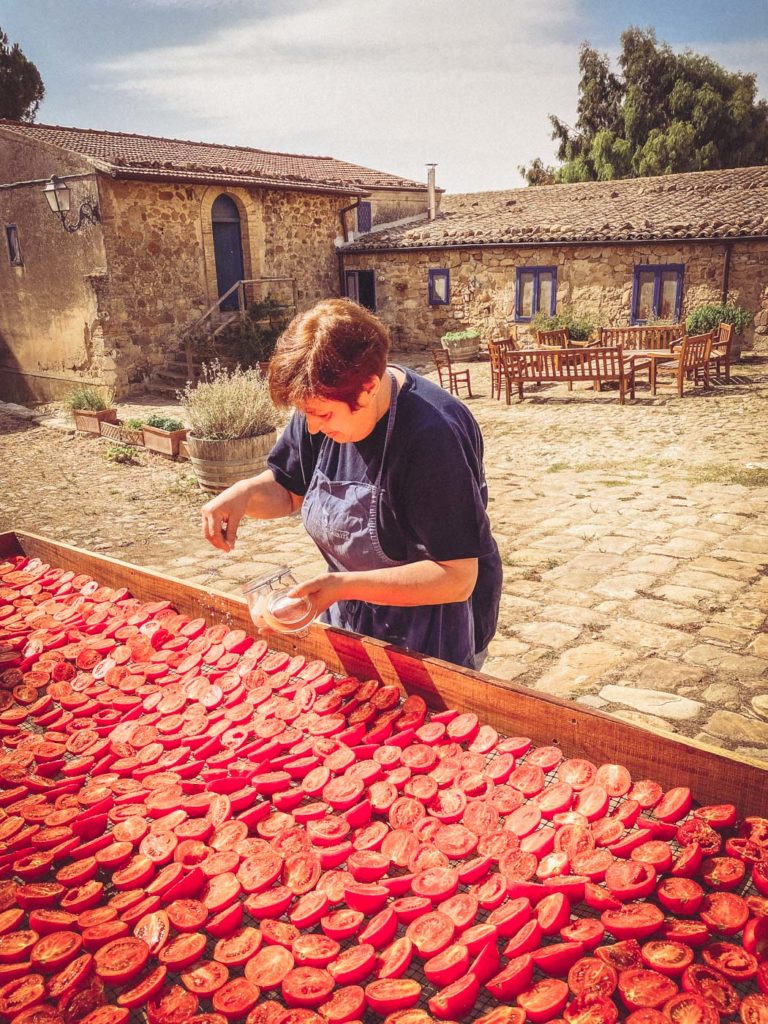
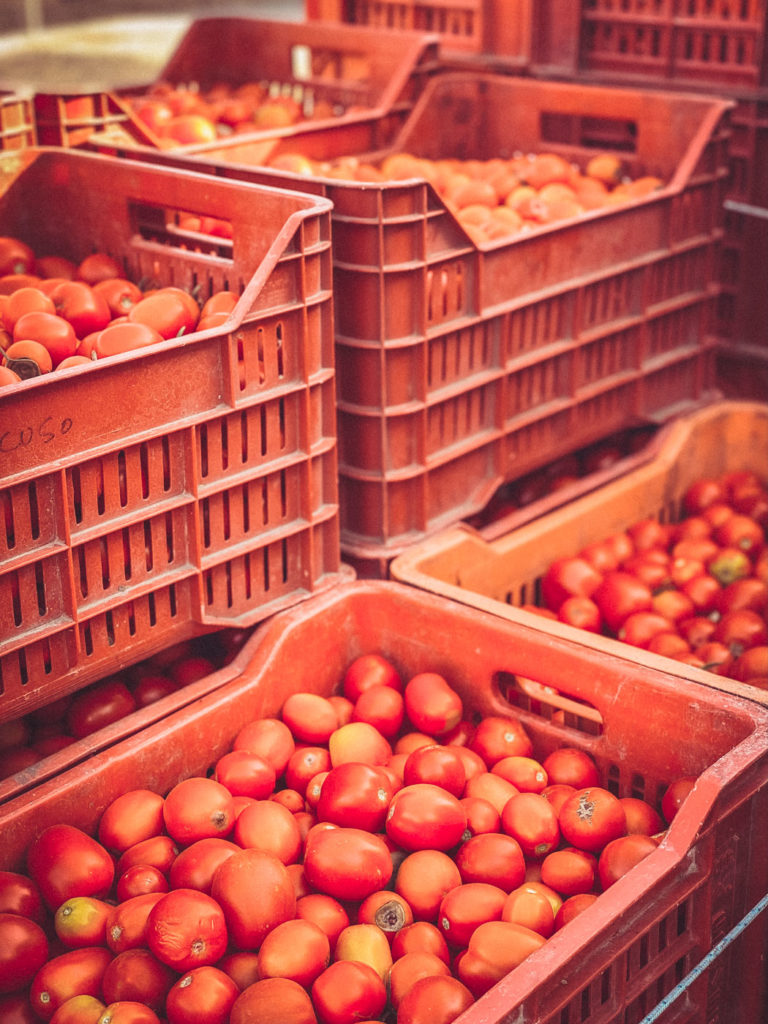
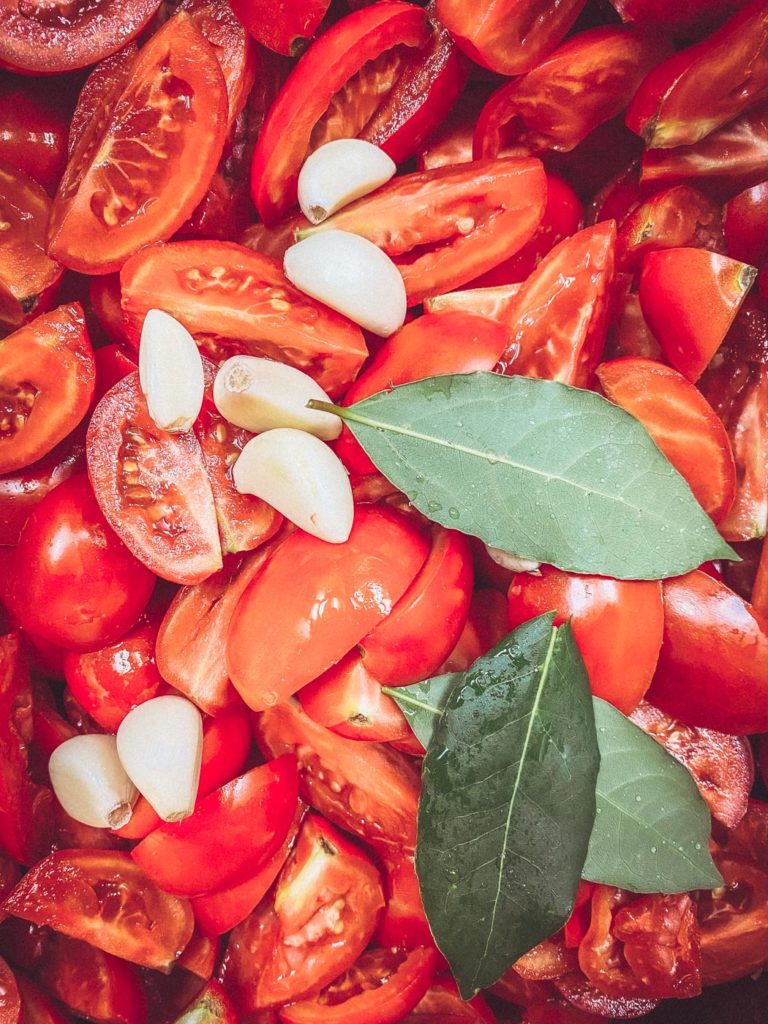

Unlike its more famous cousins, such as the San Marzano, and despite often being associated with the Pizzutello variety of tomato, the pomodoro siccagno is defined not by the seed, but by how the plant is grown.
I expected to see the plants tied to some sort of trellising system in the Cooperativa Rinascita fields. Instead, I found them sprawling freely along the ground in unruly green tufts decorated with oblong orbs ranging in hue from pale green to orange to bright red. Upon closer inspection, I discovered the tomatoes have decidedly friendly faces, each characterized by a pointed nose and a star-shaped hat.
But what is more striking than the lack of structures to prop up the plants is the absence of an irrigation system—no hoses or sprinklers in sight—which highlights the special nature of these tomatoes and the origin of their name: pomodoro meaning “tomato” in Italian and siccagno meaning “dry” in Sicilian dialect.
Dry farming (as this method is called in English) is the practice of cultivating crops without irrigation and is not unique to tomatoes or to Sicily. However, it can only successfully be practiced where plants are able to rely on natural sources of water.
“The pomodoro siccagno can grow here because we are between 800 and 1,000 meters above sea level, so that means there’s always a certain temperature drop down at night,” says Lanza, adding that the “clayish” composition of the soil is especially well suited to maintaining a certain amount of moisture.
The absorption into the soil of dew that forms during the night is essential to the survival of the plants because it is the only water the pomodoro siccagno receives for the majority of the growing process.
“In the old days, they used to sew the seeds in March,” explains Lanza. “Traditionally the 19 of March was the peak sewing moment because it was the Feast of Saint Joseph and because it’s the shift between winter and spring, so it’s a very propitiatory moment for farmers. The seeds would collect the last rains from the winter and then the plant would grow and be harvested in summer.”
These days, young pomodoro siccagno plants are transplanted into the fields (rather than directly planting the seeds) in April or May, allowing farmers to control their conditions, such as water intake, during the vulnerable days of early growth. After that, the tomatoes are at the mercy of Mother Nature.
“We are very used—and that’s why we have practiced this non-irrigation agriculture—to a window of five months without a drop of water,” says Lanza of central Sicily, where annual rainfall is minimal and farmers have always done their best with limited access to water. What they are not equipped to handle, however, are the increasing temperatures caused by climate change.
“I grew the pomodoro siccagno for a long time, but I had to stop because I’m too low. [At this elevation], it’s too warm,” explains Lanza. On August 11, 2021—just over a week before my arrival—the temperature soared in Sicily to 48.8 degrees Celsius (119.8 degrees Fahrenheit), the highest temperature ever recorded in Europe. It was not only the extremity of the temperature, but also the relentlessness of an extended heat wave that severely affected the island’s farmers.
“This summer was so dreadful because the temperature never dropped,” remarks Lanza when we reconnect in February. She explains that pomodoro siccagno growers produced approximately 60% less tomatoes than is normal for a growing season. “You don’t need to water [the pomodoro siccagno plant]. However, it can’t stand 40 days in a row with 40 degrees Celsius.”
This past year was exceptional, but it was not the first to inflict such hardships on Sicilian farmers. “Every year they plant new varieties of tomato because with climate change, everything has changed,” explains Lanza. “Farmers are searching for ones that are resilient to this disaster we’re facing.”
While the recently increasing intensity of the summer heat is forcing local farmers to seek innovative solutions, it has also expedited the work involved in carrying out some of the region’s oldest culinary practices. For millennia, the people of the island have harnessed the power of the sun as a tool of food preservation, using it to transform fresh fruits that ripen during the warm months into dried fruits that serve as vital sustenance in the cold months of less agricultural abundance.
At the Anna Tasca Lanza Cooking School in August, I learned about Sicilian food preservation traditions through active participation and witnessed the accelerated processes—rotund grapes turned to tiny raisins under the sun and I plucked them off their stems, one by one. Delicate, juicy figs, which I halved and laid out beneath the sky just hours before, shrunk into firm, jammy versions of themselves. And then, there were the tomatoes.
“It was absolutely normal in the old days to have a bunch of whole tomatoes drying in the sun in summer, then you hung them by the door and ate them during the winter,” Lanza recalls. Some preservation techniques require considerably more effort. During our time together, we processed dozens of enormous baskets of tomatoes sourced from Cooperative Rinascita. Given that the pomodoro siccagno is grown close to the ground, farmers choose hardy varieties with a thick skin that does not bruise or break easily, and because it is grown without much water, the water content of the fruit itself is low, causing the flesh to be dense, flavorful and rich in antioxidants—all of which makes these tomatoes perfect for preservation.
We halved some of the tomatoes and spread them out on mesh tables in direct sunlight, then sprinkled them generously with salt. A few days later, I ate the most delicious sun-dried tomatoes I have ever tasted, which—unlike most so-called “sun-dried” tomatoes—never saw the inside of an industrial dehydrator.
The most labor-intensive activity was the making of the tomato paste, called astrattu in Sicilian dialect. First, the tomatoes are cut in half and then boiled in massive pots with onions, garlic and bay leaves until ready to be blended into a sauce. This sauce travels from the kitchen to the courtyard, where it is poured over large wooden tables to form a thin layer. Over three days, aided by frequent, gentle stirring, the water from the sauce drips onto the cobblestones and evaporates into the air, leaving behind a thick, aromatic and deep red substance.
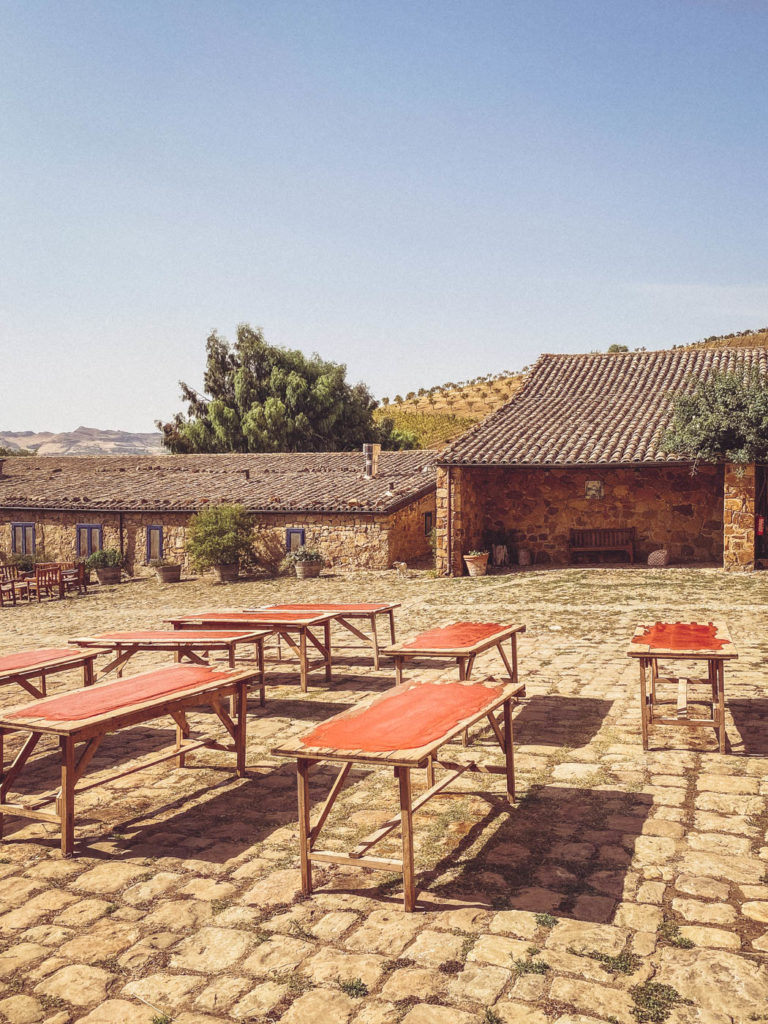
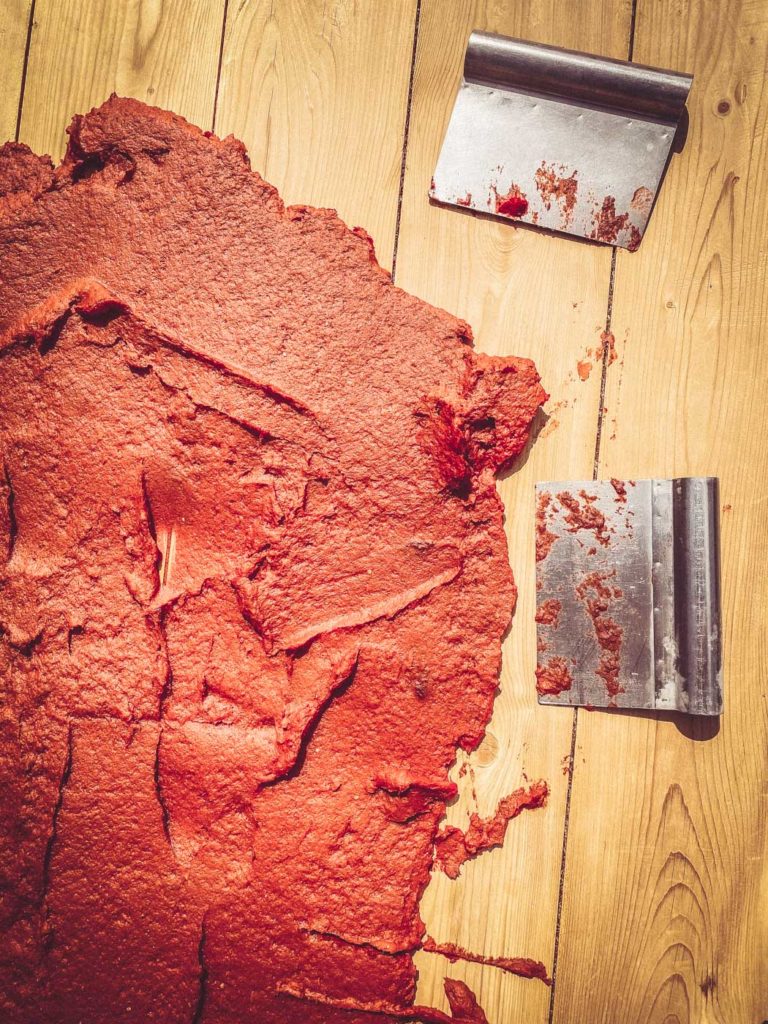
Lanza describes the tomato paste as “a flavor enhancer” and recommends its use “as a base in sauces, ragù, stews and stocks.” When in February I open the jar of tomato paste that I helped to make in August, I am immediately struck by the umami nature of its flavor. Far beyond the mild savoriness of a tomato, the paste is almost meaty, reminiscent of hamburgers at summer barbecues, with a saltiness and creaminess like anchovies. It is delicious and—with the knowledge of how limited the supply of tomatoes was this season and how many went into producing a small quantity of paste—precious.
“I think Sicily holds onto many things that are lost in the rest of Italy,” says Lanza about the continuation of food preservation traditions like making astrattu, pointing out that this is likely a result of their relatively remote geographical position as an island. “We’re the center of the world and the last of the world—this is what the Sicilian feels.”
She adds, “I don’t think we need to save all of this just for the sake of tradition. I think tradition is a live thing; it’s not just something that was done in the past and now we’re reproducing it. A tradition remains alive if it makes sense in the present.”
Whether Sicilian food preservation traditions built on the pomodoro siccagno remain alive will depend on the lives of the tomato plants themselves, which, in turn, will depend on how much our climate changes in future years and how quickly farmers are able to adapt.
“Food is not just something we eat; it is a whole world of gestures and thoughts and practices and intentions and relations and social structures. In order to preserve this idea of food, you need to preserve the whole path,” says Lanza. “And you have to start from what the land gives you.”
In the past, humans relied on food preservation as a means of surviving one especially challenging season each year. Now, our own self-preservation and survival of many challenging seasons to come may rely on our ability to preserve resourceful and resilient culinary and agricultural traditions such as these, and, most of all, the land that sustains us all.





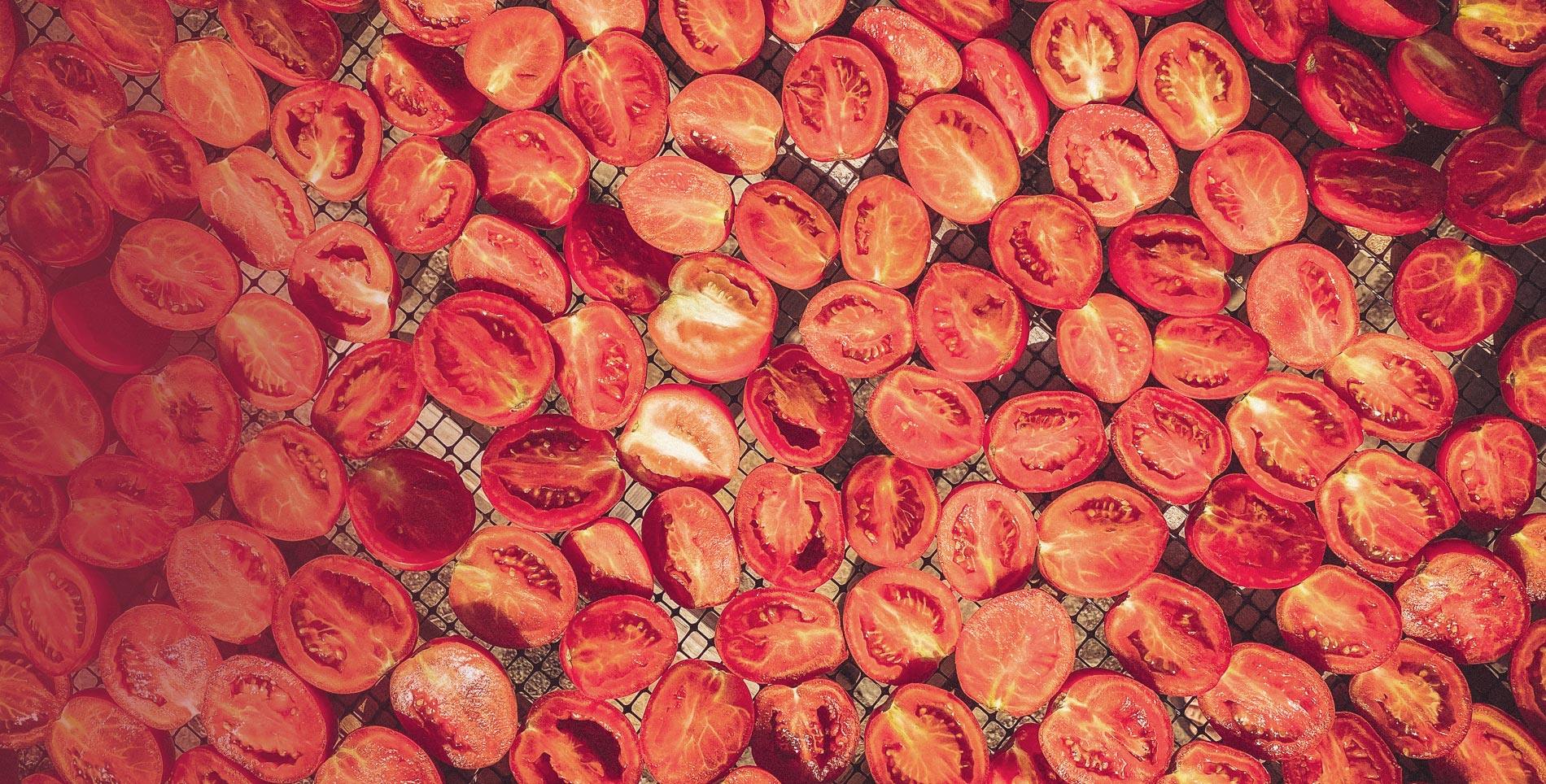

Our comments section is for members only.
Join today to gain exclusive access.